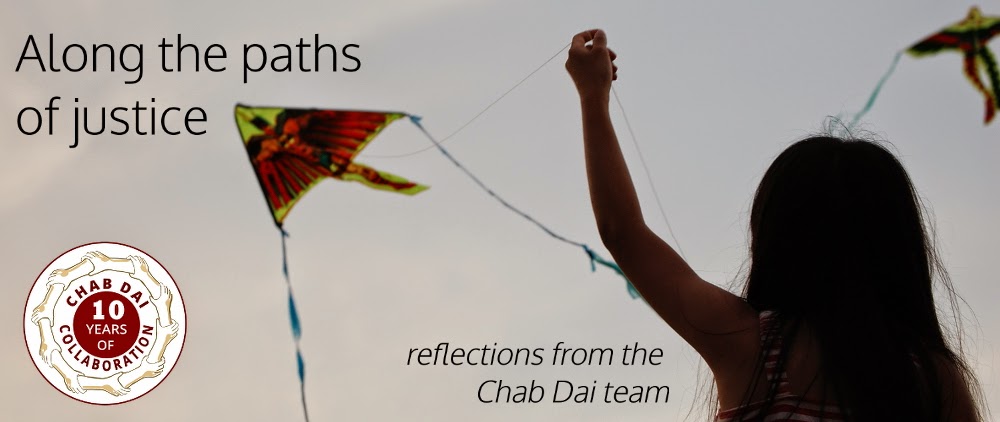The Learning Community
project is a definitive part of the Chab Dai programme, being the core of all
our coalition-building events, key member trainings and collaboration
activities. But since #10yearsofChabDai is all about highlighting the projects and people who have been
fundamental to our vision, it seemed like a
good opportunity to check in with the LC and its current Project Manager, Um
Sam Ol.
Sam Ol started at Chab Dai as a Media and Communications
intern in 2010 and, five years later, oversees the member application process, the resource library and our bi-annual member meetings, as well as key trainings for our member NGOs.
Managing a diverse and dynamic coalition
Being the glue that holds the coalition together is not
always straightforward, it seems.
“Our 53 organisations are so diverse and dynamic and have
their own focus and as we are the central body, it can be challenging to link
up with all of them.” Nevertheless, Sam Ol has seen some great results of
capacity-building in action:
“A project coordinator at an NGO based in Banteay Meanchey
gave us some really positive feedback about our Child Protection Policy
training. The organisation was trying to promote child rights in the community,
but they often saw violence, or parents forcing their children to go to work to
bring income for the family. After some staff attended our training, they got
the knowledge and skills to go back to their staff and pass on the training.
Then their staff could train the community and they saw a noticeable
improvement.
"The
community character has changed in the way they react to the children.
They know how to protect children and know what to do when the children are
being abused or exploited. We see that they are now respecting their
children’s rights more and we saw a reduction of violence happening."
Participant,
Child Protection Training
Changing attitudes
 When I ask Sam Ol how the human trafficking situation has changed inthe last decade, he talks about a shift in attitudes, from focusing just on
aftercare to taking a more holistic approach.
When I ask Sam Ol how the human trafficking situation has changed inthe last decade, he talks about a shift in attitudes, from focusing just on
aftercare to taking a more holistic approach.
“In the early days, there were a lot of brothels and trafficking was
really crazy and that’s why the shelters were needed. But later, the government
realized that the best interest of the client is not living in the shelter but
with their family. That is why now there is a shift to focus on family and
community – a lot of organisations still offer care to the client but more
community-based.
“And from the NGO perspective now, they’re not just focused on their
own job, as before – they try to cooperate more because they believe that,
working together, we can end this issue.”
The crucial contribution that the Learning Community team
offers is support for services on the frontline, as Sam Ol says:
“Even though I work in the LC which is not directly
benefitting the client, I serve in an indirect way, I can still be a part of
it. With members who are working directly with survivors. This really inspires
me to keep on going.”
Want to read more
about the work of our different teams here at Chab Dai? Catch our interview
with the Jeut Nung Dai team here, or take a look at our main
website for more information.


